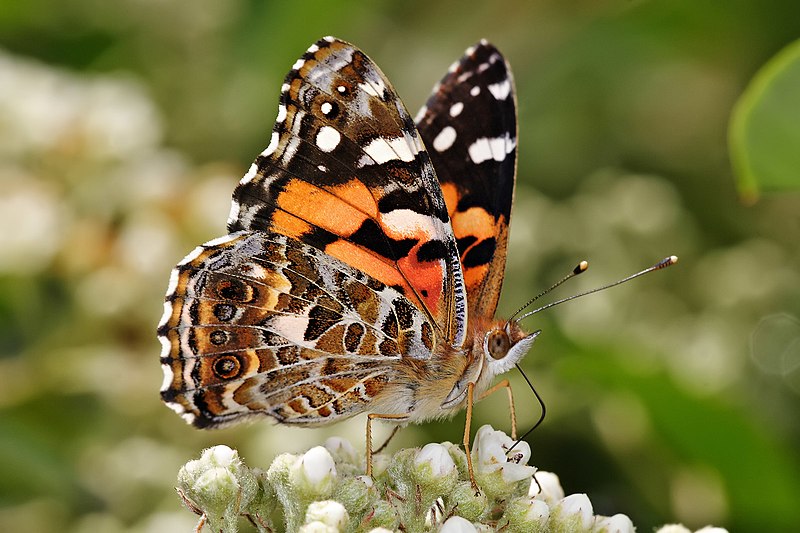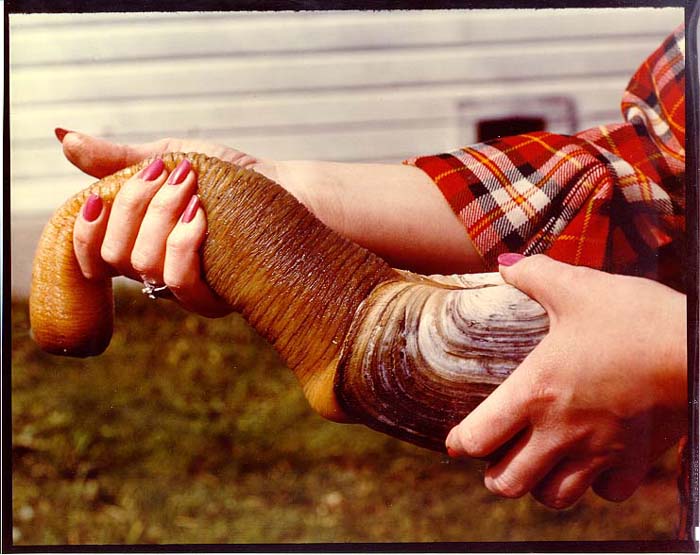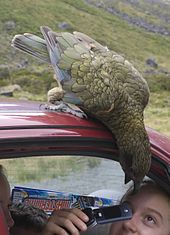First, let me apologize for my long absence by saying that I am immensely proud of every single hit this website gets and wouldn't abandon it for the world. I've been dealing with a bit of writer's block lately, and it's kept me off of less demanding projects like WTFNature. But rest assured that I have no intention of shutting it down, and hope to update more in the next few weeks.
Now that the sappy part is out of the way, let's talk about bodily fluids. More specifically, blood and its numerous analogues found throughout the animal kingdom. The purpose of blood, as we all learned in gradeschool, is to carry vital nutrients and oxygen through a body in the most effective way possible, feeding the cells and facilitating all the chemical reactions that allow us to live. In humans, blood begins pumping through our veins about 6 weeks after conception: that's long before we develop hands, eyes, lungs or a functional brain. Among vertebrates, the heart and the spine are basically the two structures around which the rest of the body is built. Different branches of life utilize different but equally important modes of transporting things around the body, and that's what we're here to discuss.
| Unfortunately, we didn't have enough room for Vulcan biology in this article. |
Virtually any animal that happens to have a spine is guaranteed to have red blood. (There are a couple of exceptions to this statement, but more on that later.) However, the same cannot be said for invertebrates, who bleed a lovely array of hues from dark blue to yellow-green. It all has to do with the blood's primary oxygen binding molecule. Vertebrates employ a compound called hemoglobin, which is based in iron and therefore turns scarlet red when oxygenated. (It's the same reason that iron and steel products rust: iron atoms bind with oxygen to create a new,
bright red compound.) But invertebrates have a variety of different oxygen binders, most of which are based in copper rather than iron. The most common type of copper-based blood is called hemocyanin, which is naturally transparent but turns
bluish-green when oxygenated, just like corroded copper. (Picture the Statue of Liberty.)
 |
| Cold-blooded heifer. |
While hemoglobin is always neatly packed away in red blood cells, hemocyanin gets no such distinction. It just floats freely in the animal's circulatory system, which, also unlike ours, does not have separate blood and lymphatic systems. All the important life-maintaining liquids flow though the same vessels as a thin substance called hemolymph. Though it's probably been around much longer in evolutionary terms, hemolymph is less efficient at storing and transmitting oxygen than hemoglobin, and this is one of the chief reasons invertebrates are limited in their overall bodily mass. Unlike vertebrates, insects and arthropods just can't circulate oxygen well enough to fuel a larger body. In addition to being crushed by their own weight, (thanks for ruining our best sci-fi monsters,
Square-cube Law,) a hypothetical giant invertebrate would suffocate from the inside because its cells couldn't get enough oxygen to support them.
 |
| We would've taken over the world if it wasn't for you meddling vertebrates and your fancy hemoglobin! |
So why is it that octopi bleed bright blue while grasshoppers ooze that sort of leafy green? There are a ton of different hemolymph compounds out there, and explaining each and every one of them would take more space than this whole blog could provide. (Not to mention be extraordinarily boring, even by my standards.) To put it shortly, different families of invertebrates use different mixtures of hemocyanin and other compounds to get the job done. Mollusks and many other marine animals have a high concentration of hemocyanin, which makes their blood appear greenish-blue and allows them to survive with their relatively flimsy gills. Most insects don't even circulate blood: they just take in air from their spiracles (openings in the exoskeleton) and pipe it directly into their tissues.
 |
| We can kinda sorta breathe! |
But that is more than enough about invertebrates and how their various liquids work. In fact, if you're still reading at this point in the article, congratulations because you probably have a longer attention span than I do. Alright, so what about the bigger, more interesting animals? Is there anything going on there that we haven't already seen? Indeed there is, and its name is
Prasinohaema: the green-blooded skink. Skinks (let's take one more opportunity to giggle at that word, because it pops up a lot,) are a type of lizard, characterized by long, snakelike bodies and stumpy legs, that are painfully common in certain parts of the world. In fact, some groups are banned in Australia because they risk becoming an invasive species, and the last thing Australia needs is more invasive species. The green-blooded skink is so mundane in New Guinea that you can't walk through the woods without bumping into them, but they also hold a unique biological anomaly in boasting the greenest innards the vertebrate world has ever seen. For reasons still not fully understood, these little lizards have an outrageous amount of biliverdin, a pigment normally found in bile that, in the right light, looks positively lime green. Biliverdin is more of a metabolic byproduct than a functional compound, and scientists are baffled as to why the green-blooded skink can be completely seeping with it and not die. Theories suggest that the strong bile presence protects the skinks from parasites and makes them unpalatable to predators, but that's the only explanation we have so far. Exactly why and how their entire chemistry has been rerouted to accommodate the skink's poisonous tissue, we are unsure. The one thing we do know is that stepping on one would be absolutely vile.
 |
| What are you planning, alien scum? |























![[Figure 4 (Diagram of short- (left) and long-tongued (right) woodpecker
skull and hyoid apparatus.)]](http://www.talkorigins.org/faqs/woodpecker/flickerfinal4.jpg)


